Essential Equipment for Industrial Beer Production 2
(Continued from the previous article)
6. Bright Beer Tanks: The Final Stage of Beer Maturation and Carbonation
Bright beer tanks (BBTs) play a crucial role in the final stages of beer production, where the beer undergoes maturation, carbonation, and final adjustments before packaging. These tanks are designed to hold beer under pressure, allowing it to develop the desired levels of carbonation, clarity, and flavor. In industrial brewing, bright beer tanks are essential for ensuring that the beer meets quality standards before it is packaged and sent to market.
Purpose and Process in Bright Beer Tanks
After primary fermentation and conditioning in the fermentation tanks, beer is often transferred to bright beer tanks for several key purposes:
Maturation: Although much of the flavor development occurs during fermentation, additional maturation in bright beer tanks allows the beer to reach its peak flavor. This stage typically involves holding the beer at cold temperatures (0°C to 2°C, or 32°F to 36°F) to stabilize and refine its flavors, reduce any harshness, and ensure that all components are well-integrated.
Carbonation: One of the primary functions of bright beer tanks is to achieve the final carbonation of the beer. Carbonation can occur naturally through the fermentation of residual sugars or by forced carbonation, where CO2 is injected into the beer under controlled pressure. The target carbonation levels vary depending on the beer style but typically range from 2.2 to 2.7 volumes of CO2 for most beers.
Clarification: Bright beer tanks are used to further clarify the beer by allowing any remaining yeast, proteins, or other particulate matter to settle out of suspension. In some cases, additional filtration or fining agents may be applied at this stage to achieve crystal-clear beer.
Final Adjustments: Before packaging, the beer may undergo final adjustments in terms of flavor, clarity, and carbonation. These adjustments can include fine-tuning the CO2 levels, adding fining agents to improve clarity, or making minor flavor corrections if needed.
Design and Features of Industrial Bright Beer Tanks
Industrial bright beer tanks are engineered to manage large volumes of beer while providing the necessary conditions for maturation, carbonation, and clarification. Key design features include:
Pressure Rating and Construction: Bright beer tanks are typically rated to handle high internal pressures, often between 2.5 to 3.0 bar (36 to 44 psi), to accommodate the carbonation process. They are usually constructed from high-grade stainless steel, which is resistant to corrosion, easy to clean, and capable of withstanding both the pressure and the low temperatures required during maturation.
Cooling Jackets: Like fermentation tanks, bright beer tanks are often equipped with cooling jackets or internal cooling coils. These systems allow for precise temperature control, maintaining the beer at cold maturation temperatures. The ability to control temperature is crucial for achieving proper carbonation and ensuring that the beer matures without developing off-flavors.
Pressure and CO2 Management: Bright beer tanks are fitted with pressure gauges, valves, and safety relief systems to monitor and control the internal pressure. This is especially important during forced carbonation, where CO2 is introduced into the tank at a controlled rate to achieve the desired carbonation level. Automated systems may be used to adjust CO2 flow based on real-time pressure readings.
Sight Glass and Sampling Ports: Tanks are often equipped with sight glasses and sampling ports, allowing brewers to visually inspect the beer and take samples for analysis. This helps in monitoring the clarity, carbonation level, and flavor during the maturation process.
Sanitary Design: Bright beer tanks are designed with sanitary fittings, smooth internal surfaces, and minimal dead space to prevent contamination. This ensures that the beer remains sterile during its final stages before packaging.
Performance Metrics and Efficiency
Several performance metrics are critical in assessing the efficiency and effectiveness of bright beer tanks in an industrial setting:
Carbonation Efficiency: This metric measures how effectively CO2 is dissolved into the beer. High-efficiency systems achieve the target carbonation levels quickly and evenly, typically within a few hours. For example, a brewery aiming for 2.5 volumes of CO2 in a 100-hectoliter tank can achieve this level within 2-4 hours of forced carbonation.
Clarity: The clarity of the beer is an important quality parameter, especially for styles that require a bright, clear appearance. Bright beer tanks should allow for the reduction of turbidity to below 1 NTU (Nephelometric Turbidity Units), which is generally considered the threshold for crystal-clear beer.
Maturation Time: The time required for maturation in bright beer tanks varies depending on the beer style and the desired flavor profile. However, industrial processes aim to minimize maturation time while ensuring quality. A typical maturation period in a bright beer tank might range from a few days to two weeks.
Yield: The yield from bright beer tanks is the volume of beer that is ready for packaging after maturation and clarification. High-yield processes minimize losses during transfers, carbonation, and clarification, aiming for a final yield of over 95% of the original volume.
Example: Bright Beer Tank Operations in a Large Brewery
Consider a large brewery operating a 200-hectoliter bright beer tank. After fermentation and conditioning, the beer is transferred to the bright beer tank at a temperature of around 2°C (36°F). The tank is sealed and pressurized to 2.8 bar (40 psi) for forced carbonation. CO2 is introduced into the tank through a carbonation stone, a porous device that diffuses CO2 into the beer in fine bubbles, ensuring rapid and even carbonation.
Over the next 3 hours, the brewery monitors the pressure and carbonation levels, aiming for a final CO2 content of 2.6 volumes. The tank's cooling system maintains the beer at the desired temperature throughout this process.
During maturation, the beer's flavor continues to develop, and any remaining yeast or sediment settles to the bottom of the tank. The brewery samples the beer periodically to check for clarity and taste. If necessary, additional fining agents are added to enhance clarity, bringing the turbidity below 1 NTU.
Once the beer has achieved the desired carbonation, clarity, and flavor profile, it is ready for packaging. The brewery achieves a final yield of 96% from the bright beer tank, with minimal loss due to sedimentation and filtration.
Maintenance and Cleaning
Proper maintenance and cleaning of bright beer tanks are essential for ensuring consistent beer quality and prolonging the life of the equipment:
CIP Systems: Bright beer tanks are cleaned using CIP (clean-in-place) systems, which involve circulating cleaning solutions, such as caustic soda and sanitizers, through the tank. This process removes any residual beer, yeast, or biofilm that could contaminate the next batch.
Pressure and Cooling System Checks: Regular checks of the pressure gauges, valves, and cooling systems are necessary to ensure they are functioning correctly. Any leaks, pressure irregularities, or cooling inefficiencies must be addressed promptly to prevent operational issues.
Visual Inspection: After cleaning, tanks should be visually inspected to ensure all surfaces are clean and free from residues. Sight glasses and sampling ports should be checked for cleanliness and proper operation.
Bright beer tanks are the final stop in the beer production process, where the beer is matured, carbonated, and clarified before packaging. In an industrial brewing setting, these tanks are designed to handle the pressures of carbonation and the cold temperatures needed for proper maturation. The ability to control these conditions precisely allows breweries to produce beer with consistent quality, clarity, and flavor. Through efficient carbonation, careful monitoring, and proper maintenance, bright beer tanks play a vital role in delivering a product that meets the brewery's high standards and satisfies consumer expectations.
7. Packaging Equipment: The Final Stage of Industrial Beer Production
Packaging is the final step in the industrial beer production process, where the finished beer is transferred from bright beer tanks into various containers such as bottles, cans, or kegs. This stage is crucial for ensuring that the beer reaches consumers in perfect condition, maintaining its freshness, carbonation, and flavor. Industrial beer packaging equipment is designed to operate at high speeds with great precision, enabling large-scale breweries to efficiently package vast quantities of beer while maintaining consistent quality.
Purpose and Functionality of Packaging Equipment
Packaging equipment in an industrial brewery performs several key functions:
Filling: The core function of packaging equipment is to fill containers with the correct volume of beer. This process must be accurate to avoid overfilling, which can lead to spillage and waste, or underfilling, which can result in consumer dissatisfaction and regulatory issues.
Sealing: After filling, containers must be sealed immediately to prevent the beer from being exposed to oxygen, which can lead to oxidation and spoilage. Sealing also ensures that the carbonation level is preserved, keeping the beer fresh and bubbly.
Labeling: Once sealed, the containers are labeled with important information such as the brand name, beer style, alcohol content, and expiration date. Labels must be applied consistently and accurately to maintain brand presentation and comply with regulatory requirements.
Packaging: After labeling, containers are often grouped and packaged into cases, trays, or cartons for easier handling and distribution. This stage also includes the application of any additional packaging, such as shrink wraps or secondary labels.
Types of Packaging Equipment
Industrial breweries use a variety of specialized equipment to handle the different stages of packaging:
Bottle Filling Machines: These machines are designed to fill beer into glass or plastic bottles. They typically operate with a gravity filling system or an isobaric (pressure) filling system to ensure that the beer is filled at the correct level without excessive foaming. Modern bottle fillers can handle up to 60,000 bottles per hour, depending on the configuration and bottle size.
Can Filling Machines: Similar to bottle fillers, can filling machines are optimized for aluminum cans. They are often equipped with sensors to ensure precise filling and to minimize oxygen uptake during the process. High-speed can filling lines can operate at speeds of up to 2,000 cans per minute, making them ideal for large-scale production.
Keg Filling Systems: Kegging is another common method of packaging, especially for beer that will be distributed to bars and restaurants. Keg filling systems are designed to clean, sanitize, and fill kegs efficiently. These systems are capable of filling up to 100 kegs per hour and often include automated cleaning cycles to ensure the kegs are free from contaminants before filling.
Capping and Sealing Machines: After filling, bottles and cans must be sealed quickly and securely. Capping machines are used for bottles, applying either crown caps or screw caps, while seaming machines are used for cans, sealing the lids to the can bodies. These machines must operate with high precision to ensure a perfect seal every time, preventing leaks and maintaining beer quality.
Labeling Machines: Labeling machines apply labels to bottles, cans, or kegs at high speed. These machines can handle various types of labels, including pressure-sensitive labels, wrap-around labels, and shrink sleeves. They are equipped with sensors to ensure labels are applied straight and at the correct position on the container.
Packaging and Palletizing Systems: After filling, sealing, and labeling, the containers are grouped and packaged for distribution. Packaging systems can include case packers, shrink wrappers, and carton sealers. Palletizing systems then stack the packaged beer onto pallets for easy transportation and storage. Automated palletizers can handle hundreds of cases per hour, significantly improving efficiency in large breweries.
Performance Metrics and Efficiency
Efficiency in packaging is critical for large-scale breweries, and several metrics are used to assess the performance of packaging equipment:
Filling Accuracy: Filling accuracy is crucial to ensure that each container has the correct volume of beer. High-precision filling machines typically achieve an accuracy rate within ±0.1% of the target fill level, ensuring that all containers meet regulatory standards and consumer expectations.
Packaging Speed: Packaging speed is a key performance metric, particularly in large breweries. High-speed lines can fill and package thousands of containers per hour. For example, a modern canning line might fill and seal up to 120,000 cans per hour, depending on the equipment and can size.
Oxygen Uptake: Minimizing oxygen uptake during packaging is essential to preserve the beer's freshness and flavor. Advanced packaging systems are designed to limit oxygen exposure to below 50 parts per billion (ppb), which is critical for preventing oxidation.
Downtime and Changeover Efficiency: In industrial settings, minimizing downtime for maintenance and changeovers (switching between different container types or sizes) is important for maintaining high throughput. Modern packaging lines are designed for quick and easy changeovers, often taking less than 30 minutes, which maximizes operational efficiency.
Example: Packaging Line Operations in a Large Brewery
Consider a large brewery that operates a high-speed bottling line. The line begins with empty bottles being fed into the machine, where they are first rinsed with sterile water or a cleaning agent. The bottles then move to the filling station, where they are filled with beer using an isobaric filling system that maintains the beer's carbonation and minimizes oxygen uptake.
After filling, the bottles are immediately capped with crown caps using an automated capping machine. The capped bottles then proceed to the labeling station, where pressure-sensitive labels are applied to each bottle at a speed of 1,000 bottles per minute.
The labeled bottles are then grouped into six-packs and placed into cardboard cases by a case packing machine. Finally, the cases are palletized using an automated palletizer, which stacks the cases onto pallets ready for distribution.
This entire operation is monitored by a centralized control system that tracks filling accuracy, carbonation levels, and line speed. Any deviations from the set parameters trigger automatic adjustments or alerts to ensure that the packaging process remains within the desired specifications.
Maintenance and Quality Control
Regular maintenance and quality control are essential for the optimal performance of packaging equipment:
Routine Maintenance: Packaging machines require regular maintenance to prevent breakdowns and ensure consistent operation. This includes lubrication of moving parts, inspection of seals and gaskets, and calibration of sensors and filling nozzles.
Cleaning Procedures: Equipment must be cleaned regularly to prevent contamination and ensure sanitary conditions. CIP (clean-in-place) systems are commonly used to clean filling and sealing equipment without disassembly, saving time and reducing the risk of contamination.
Quality Control Checks: Throughout the packaging process, quality control checks are conducted to ensure that the beer is being filled, sealed, and labeled correctly. These checks include random sampling to test fill levels, carbonation, label alignment, and seal integrity. Any issues identified during these checks are addressed immediately to prevent defective products from reaching the market.
Packaging equipment is the final and crucial stage in the industrial beer production process, where the beer is prepared for distribution to consumers. In large-scale breweries, this equipment must operate with high precision and speed to fill, seal, label, and package vast quantities of beer while maintaining its quality and freshness. From bottle and can filling machines to labeling and palletizing systems, each piece of equipment plays a vital role in ensuring that the beer is packaged efficiently and consistently. Regular maintenance, cleaning, and quality control are essential to the smooth operation of packaging lines, helping breweries meet production goals and deliver a high-quality product to the market.
8. Quality Control Instruments: Ensuring Consistency and Excellence in Industrial Beer Production
Quality control (QC) is a critical aspect of industrial beer production, ensuring that every batch of beer meets the brewery's stringent standards for taste, appearance, aroma, and safety. To achieve this, breweries rely on a variety of sophisticated instruments and tools to monitor and test various parameters throughout the brewing process. These instruments are essential for maintaining consistency, detecting any deviations early, and ensuring that the final product adheres to the desired specifications.
Key Quality Control Instruments in Beer Production
pH Meters
Purpose: pH meters measure the acidity or alkalinity of the beer at various stages of production, including during mashing, fermentation, and final packaging. The pH level affects enzyme activity during mashing, yeast performance during fermentation, and the overall flavor stability of the beer.
Operation: Modern pH meters used in breweries are highly precise, with digital displays and automatic temperature compensation (ATC) to ensure accurate readings. The typical pH range for beer during mashing is between 5.2 and 5.6, while the final beer should have a pH of around 4.0 to 4.5, depending on the style.
Example: A large brewery might use a benchtop pH meter to take multiple readings throughout the brewing process, ensuring the mash pH is within the optimal range to achieve the desired enzyme activity for starch conversion. Consistent pH readings help in maintaining the beer’s flavor profile and stability.
Density/Gravity Meters (Hydrometers and Digital Density Meters)
Purpose: Gravity meters, such as hydrometers and digital density meters, measure the specific gravity of the wort and beer. This measurement is crucial for determining the sugar content, which in turn indicates the potential alcohol content and the progress of fermentation.
Operation: A hydrometer measures specific gravity by floating in a liquid, while digital density meters provide more precise measurements by analyzing the density of the liquid through oscillating U-tube technology. Brewers take initial gravity readings (Original Gravity, OG) before fermentation and final gravity readings (Final Gravity, FG) after fermentation to calculate the alcohol by volume (ABV).
Example: In an industrial setting, a brewery might use a digital density meter to monitor the gravity of the wort before fermentation, ensuring it aligns with the target OG. After fermentation, the final gravity is checked to confirm that the yeast has consumed the expected amount of sugar, resulting in the desired alcohol content.
Alcohol Meters (Alcolyzer or Refractometers)
Purpose: Alcohol meters measure the alcohol content of the beer, which is a key parameter for both legal compliance and product consistency. Precise control of the alcohol content ensures that the beer meets regulatory standards and matches the brewery's labeled ABV.
Operation: Alcolyzers use near-infrared (NIR) spectroscopy to measure the alcohol content without distillation, providing fast and accurate results. Refractometers can also be used to estimate alcohol content by measuring the refractive index of the beer, although they are more commonly used for sugar content in the wort.
Example: A brewery producing a large batch of lager might use an alcolyzer to measure the alcohol content after fermentation and before packaging, ensuring the beer's ABV is consistent with the product label, typically within a range of 0.1% accuracy.
Spectrophotometers
Purpose: Spectrophotometers are used to measure the color and bitterness (IBU - International Bitterness Units) of the beer, as well as to monitor turbidity and haze. These measurements help ensure that the beer's appearance and flavor profile are consistent with the brewery's standards.
Operation: Spectrophotometers work by passing light through a sample of beer and measuring the absorbance at specific wavelengths. For color, the absorbance is usually measured at 430 nm, while bitterness is assessed by measuring the absorbance of an isooctane extract of the beer at 275 nm.
Example: A brewery producing a pale ale might use a spectrophotometer to ensure that the beer’s color is within the desired range of 8-14 EBC (European Brewery Convention units) and that its bitterness falls within the target of 30-50 IBUs.
Water Testing Instruments
Purpose: Water quality is a fundamental factor in brewing, affecting everything from enzyme activity during mashing to the final flavor of the beer. Instruments for testing water include pH meters, conductivity meters, and ion chromatography systems to measure the concentrations of various ions (e.g., calcium, magnesium, sulfate, chloride).
Operation: Conductivity meters measure the water's ability to conduct electricity, which correlates with its mineral content. Ion chromatography provides detailed analysis of specific ions in the water. Regular testing of brewing water helps maintain consistency in the brewing process.
Example: A brewery might regularly test its water supply to ensure it meets the desired profile for brewing a pilsner, which typically requires soft water with low levels of minerals such as calcium and magnesium.
Microbiological Testing Equipment
Purpose: Microbiological testing is critical for detecting and preventing contamination by wild yeast, bacteria, and other microorganisms that could spoil the beer or pose health risks. This testing ensures that the brewing environment and the final product are free from unwanted microbes.
Operation: Common microbiological testing methods include plating on selective media, polymerase chain reaction (PCR) assays, and ATP bioluminescence for detecting microbial contamination. These tests are performed on samples taken from various stages of production, including raw materials, water, wort, and finished beer.
Example: A brewery might use PCR assays to detect the presence of wild yeast strains that could cause off-flavors or spoilage, ensuring that the final beer is of high quality and free from contaminants.
Carbonation Testing Instruments
Purpose: Carbonation levels are critical for the mouthfeel and overall sensory experience of the beer. Instruments such as CO2 meters and Zahm & Nagel carbonation testers measure the dissolved CO2 content in the beer.
Operation: CO2 meters typically measure the volume of CO2 dissolved in the beer by creating a pressure differential and calculating the gas content based on the change in pressure. These instruments help brewers adjust the carbonation to match the desired style.
Example: In a large-scale production of a wheat beer, which requires a higher carbonation level, the brewery might use a Zahm & Nagel tester to ensure the beer reaches 3.0-3.5 volumes of CO2, providing the characteristic effervescence of the style.
Quality Control in Practice: An Industrial Brewery Example
In a large industrial brewery, quality control instruments are integrated into every stage of the production process to ensure that the beer meets the highest standards:
Mashing: The process begins with pH meters monitoring the mash's pH, ensuring it falls within the optimal range for enzymatic activity. Density meters are used to measure the gravity of the wort, confirming that the sugar content is appropriate for the beer's intended style.
Fermentation: During fermentation, alcohol meters regularly check the ABV, ensuring that the yeast is performing as expected and that the final alcohol content will meet the target specification. pH and gravity are also monitored to track the progress of fermentation.
Post-Fermentation: After fermentation, spectrophotometers measure the beer's color and bitterness, while microbiological testing equipment ensures that the beer is free from contaminants. CO2 meters are used to verify that the carbonation level is consistent with the desired style.
Final Product Testing: Before packaging, final quality checks include testing for clarity, color, bitterness, and alcohol content. Any deviations from the set parameters trigger corrective actions to maintain consistency across all batches.
Quality control instruments are indispensable in industrial beer production, providing the data and insights necessary to maintain consistency, quality, and safety. From pH meters and density meters to advanced spectrophotometers and microbiological testing tools, these instruments ensure that every aspect of the brewing process is carefully monitored and controlled. In an industrial setting, the integration of these quality control measures helps breweries produce large quantities of beer that consistently meet the desired specifications and delight consumers with every sip.
Conclusion
The equipment used in industrial beer production is designed to ensure efficiency, consistency, and quality on a large scale. Each piece of equipment plays a critical role in transforming raw ingredients into a finished product that meets consumer expectations. By investing in the right machinery and maintaining rigorous quality control, breweries can produce high-quality beer that stands out in a competitive market.
Products
- Beer brewery equipment
- Craft brewing equipment
- Home brewing equipment
- Microbrewery equipment
- Commercial brewing equipment
- Industrial brewery equipment
- Pilot brewing system
- Brewhouse & Mash system
- Fermentation tank
- Bright / Brite tank
- CIP system
- Beer filling machine
- Pasteurizer
- Hop gun
- Yeast propagation equipment
- Beer concentration equipment
- Carlsberg flask
- Reverse osmosis water filtration systems
- Mobile water treatment systems
- Water Purification Equipment
- WFI equipment
- Purified water tank
- CIP system
- Multi effect water distiller
- Pure steam generator
- WFI tank
- Solution preparation tank
- Tube heat exchanger
- Storage and distribution system
- Liquid preparation system
- Demineralized water system
- Vapour compressor
News & Exhibitions
- Why Beer Concentration Matters: Unpacking the Standard ABV Range
- Why Every Craft Brewer Needs a Pilot Beer Brewing System
- Top 5 Benefits of Using a Pilot Beer Brewing System for Small Breweries
- Setting Up a Microbrewery? Why Turnkey Equipment Might Be Right for You
- How Nano Brewery Equipment is Changing Experimental Brewing: A Deep Dive into Small-Scale Innovation
- Essential Craft Beer Equipment for Starting Your Brewery
- Integrating Smart Equipment into Your Microbrewery
- From Grain to Glass: Building the Perfect Complete Brewing System for Your Home
TAGS
- turkey brewery equipment
- small beer brewery equipment,mini beer brewery equ
- sovereign stainless steel fermenter
- brewing equipment manufacturers uk,home brewing eq
- home brewing distillation equipment
- craft brewery equipment for sale, craft beer equip
- beer brewing equipment
- complete brewery for sale
- Nano brewery equipment, brewing systems manufactur
- 15 gallon jacketed fermenter
- automatically brew equipment,50L Brewing equipment
- dry hops addition
- hops addition gun
- hop additive gun
- mixing tank manufacturers
- pilot brewing system
- Craft beer making equipment for Malaysia
- CIP system
- Microbrewery machine
- professional Cleaning in place equipment
Newest Products
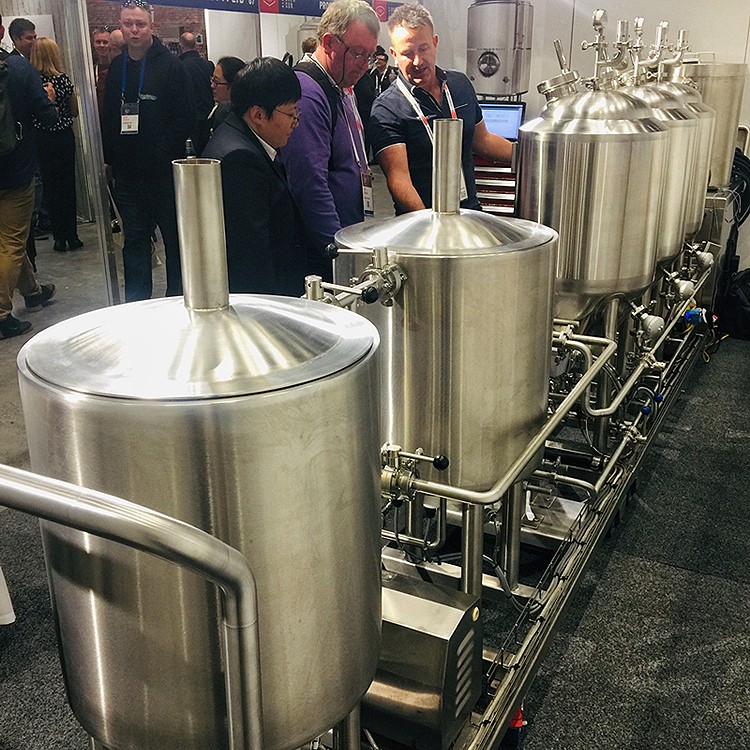
Marketplace home & living lifestyle home brewing d...
The home brewing and distilling market has grown in popularity in recent years, ...
More >>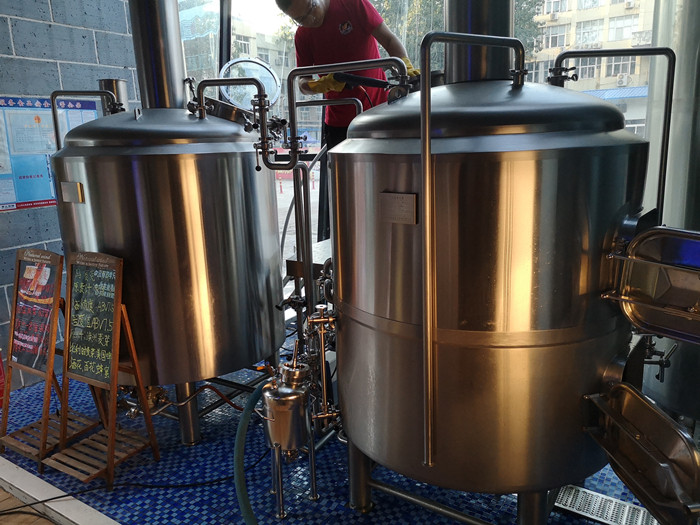
Beer brewhouse and fermentation tanks microbrewery
WEMAC-Main product categories:
Craft Beer equipment,Cider making machine,Beer b...
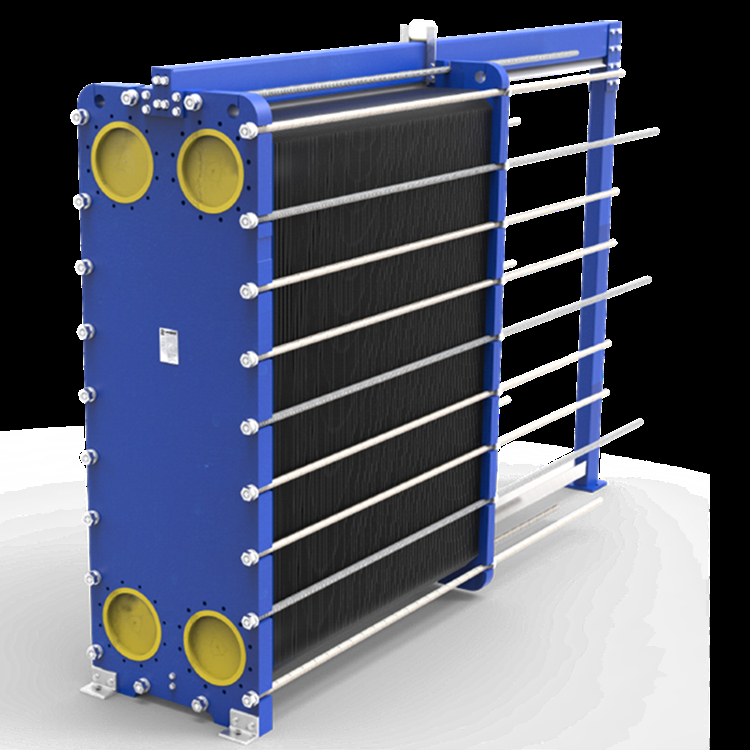
Best plate heat exchanger for beer brewery
The WEMAC plate heat exchanger (PHE) series is extensive, including multiple typ...
More >>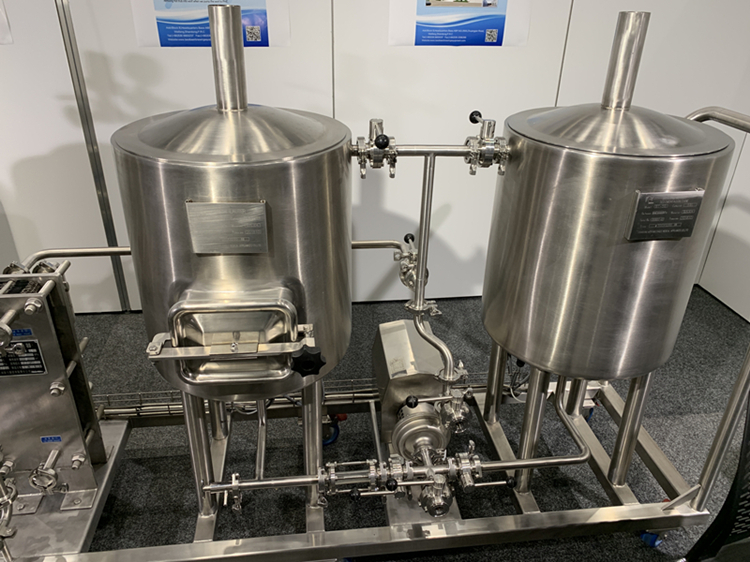
Home beer brew kits brewery equipment
This skid home brewing system is designed for craft brewing amateurs who has bee...
More >>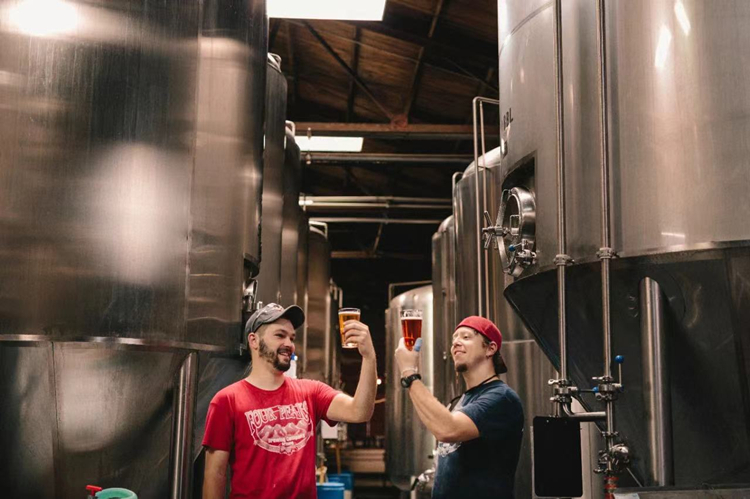
Top quality fermenter and beer bright tank
Brite or Bright Beer Tanks are also known as Beer Conditioning Tanks or Beer Ser...
More >>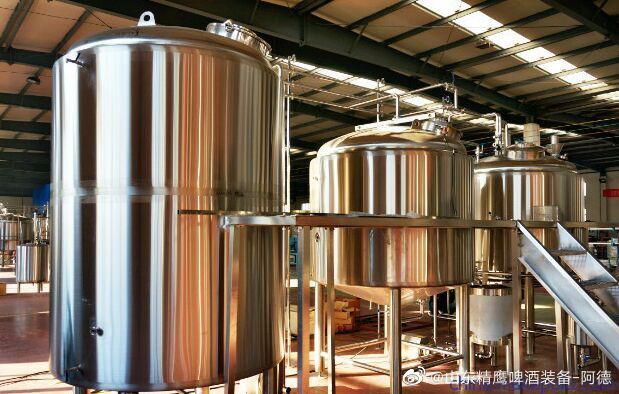
Pro two vessels 5BBL craft brewery in Michigan
Professional beer brewhouse sale well in Michigan state,turnkey brewery services...
More >>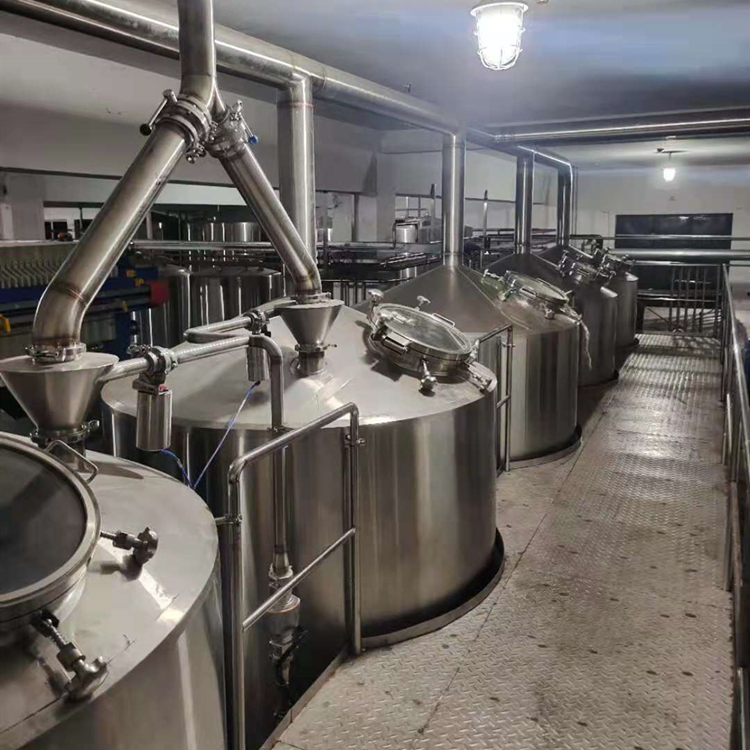
4000L Commercial Beer Brewery Equipment
4000L four vessels craft beer brewing brewery system,gas steam heating,with a be...
More >>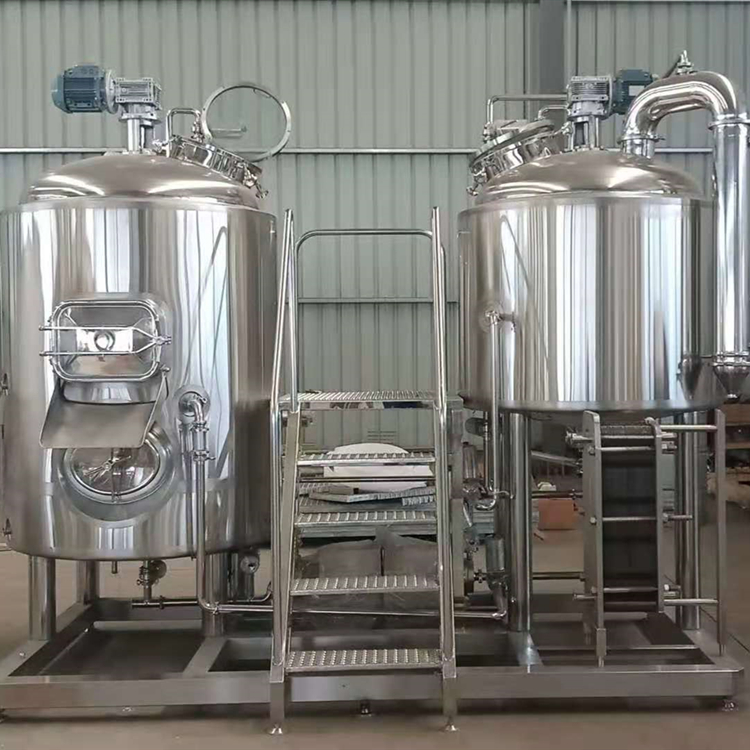
500L Top quality craft beer brewery equipment
Double vessels craft beer brewing brewhouse for sale,mash/kettle tun + lauter/wh...
More >>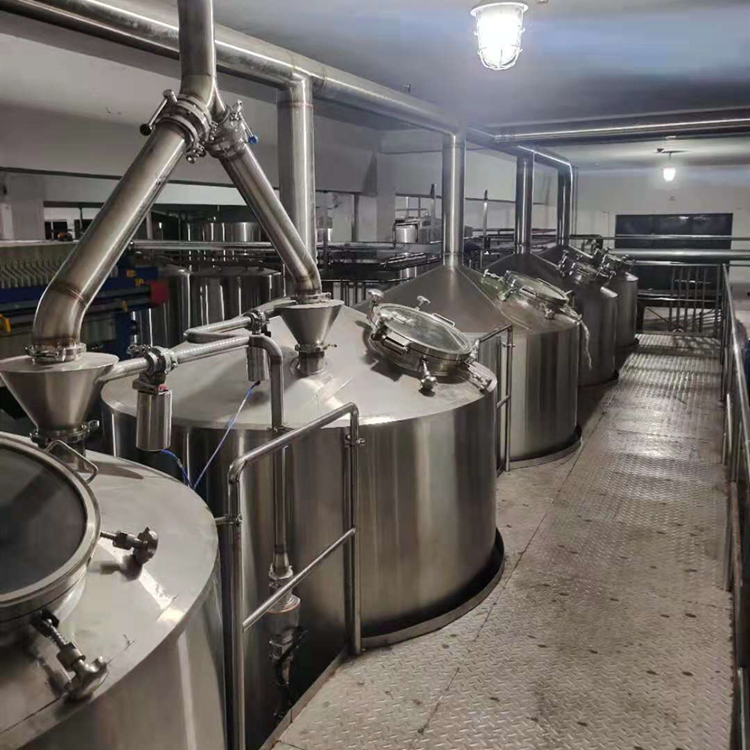
4000L Five vessels turnkey beer brewery
Five vessels craft beer brewhouse system suppliers,Double mash tun+double kettle...
More >>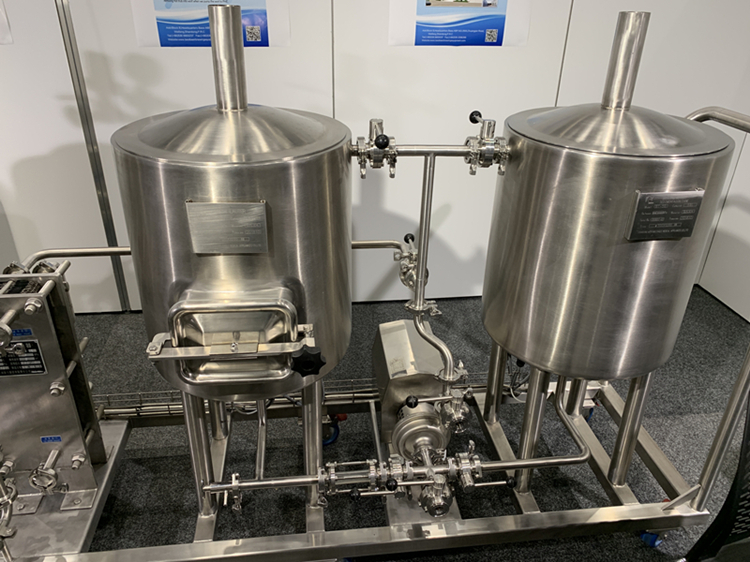
Best 50L home beer microbrewery equipment
Two vessels combination,mash/lauter tun+kettle/whirlpool tun brewery.electric co...
More >>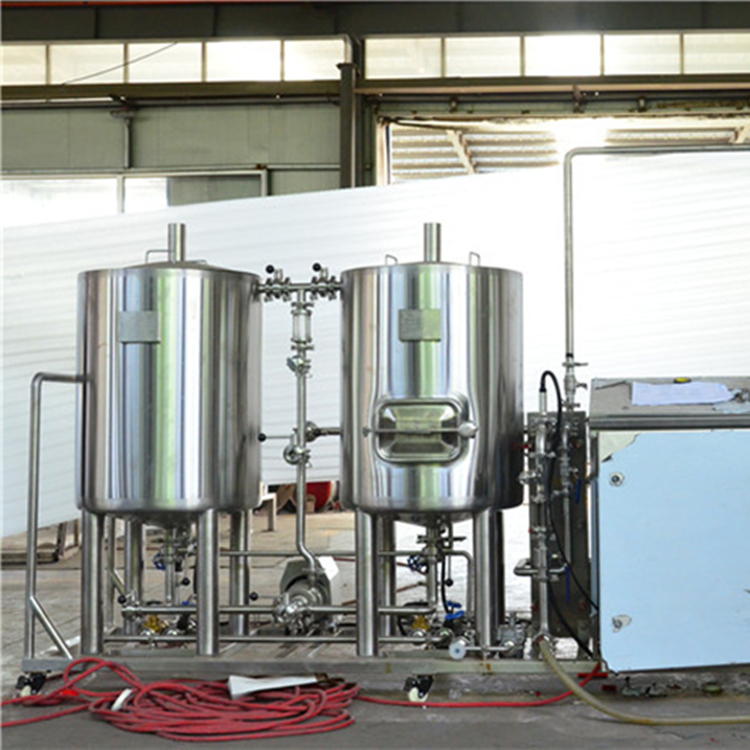
100L beer brewing home microbrewery
Mash/lauter/kettle tun+whirlpool tun,electric coil heating,two stages cooling,pl...
More >>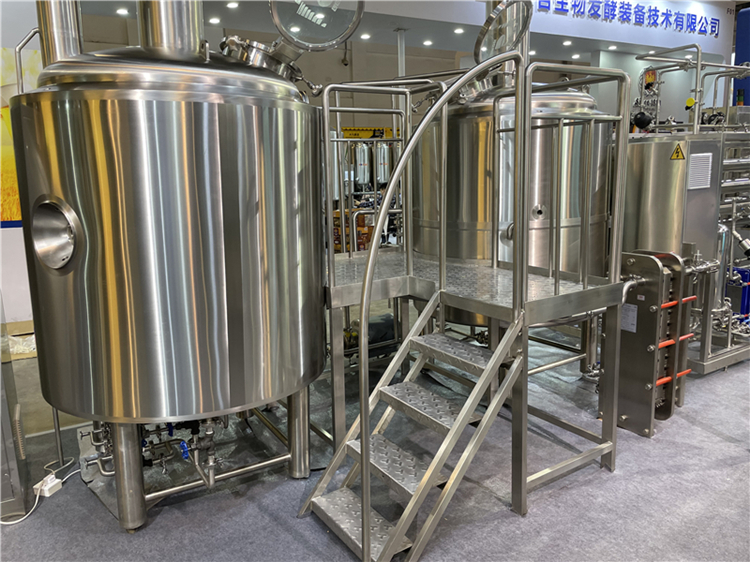
Build me a 1500L beer brewery
mini beer brewery machine from 50L,which is suitable to use in home and family b...
More >>